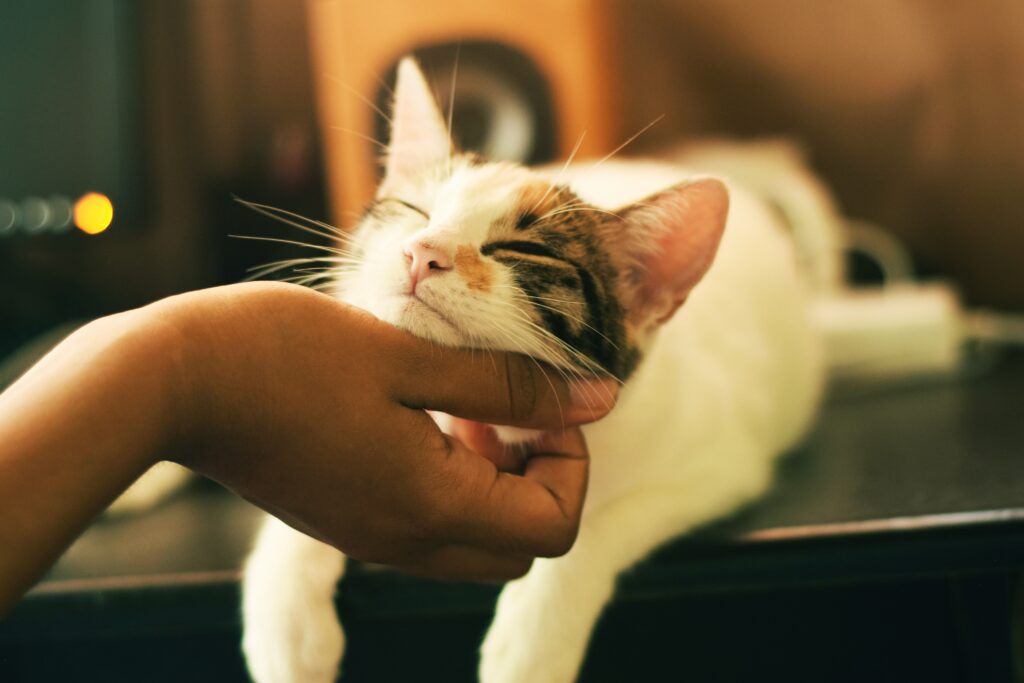The Healing Power of Purring

The Healing Power of Purring
If you’ve ever had the experience of sitting with a cat who is purring, you have most likely felt soothed and calm, and perhaps even found yourself smiling. The soft vibration of a furry creature has an extraordinary, but fairly uniform effect on humans. And did you know? It has the same effect on themselves.
What is purring?
Purring occurs when the muscles of the larynx dilate and contract rapidly as the cat breathes. This action oscillates the glottis, which is the part of the vocal chords that creates sound. Purring is generally thought to only be possible if the hyoid, a small bone in the neck, is ossified, meaning it is truly bone and not cartilage, as is the case in small felines. Larger felines with unossified hyoids use the same muscles to roar instead—something we’d likely not enjoy hearing from our furry little companions.
But cats didn’t learn to purr to please us humans. There is purpose to their purring. It is something mother cats do to comfort and reassure their kittens, and kittens do to get the attention of their mothers. Grown cats may also purr to themselves when they are stressed or have suffered trauma, either emotional or physical. Of course, cats use purring to express pleasure towards their human guardians as well.
What does purring do?
Purring is a self-comforting activity that actually stimulates recovery from illness and injury. Domestic cats can purr at a frequency of 20-140 Hz, but they typically do so at about 26 Hz, which has been shown to facilitate healing, both in felines and humans. It has even been shown to promote bone regeneration.
In the cat, purring releases oxytocin, which is sometimes known as the “Cuddle Hormone” because it is linked to warm, fuzzy feelings. In addition, purring releases endorphins, otherwise known as the body’s natural opiates. This leads to a state of relaxation and stress reduction. It also optimizes conditions for recovery from trauma.
Not surprisingly, purring does the same for us.
The soft, buzzing sound we hear stimulates a similar release of hormones and comparable physiological reactions in our own bodies. It is even more potent when we feel that vibration with our hands or in our laps.
For most of us fortunate enough to be adopted by a cat, we are mostly only aware of the soothing noise, the pleasant pulsation, and the soft fur. Perhaps we merit a sandpaper tongue “grooming” our fingers or face, and an occasional tail wrapping itself around our arm or leg in a hug.
When an intelligent animal steps into your lap and closes her eyes in total trust, with a look of pure bliss on her face, how can you not be moved to join her in that emotion?
But did you know that in humans, a cat’s purring has been shown to lower blood pressure, reduce headaches, and prevent heart disease? Research has shown that owning a cat reduces a person’s risk of stroke and heart attack.
Studies have also shown that introducing a cat into the household with an autistic child often improves the child’s socialization and empathy. The naturally calm demeanor of a properly selected cat can potentially be an adjunct in the treatment of autism and autism spectrum disorder.
So before you discredit the benefits of parenting a cat, open yourself up to the experience of being purred at, and spend ten minutes petting a friendly feline.